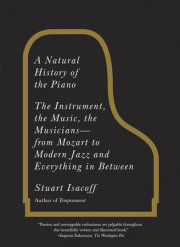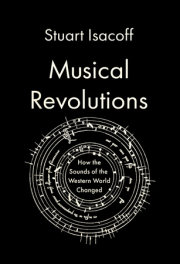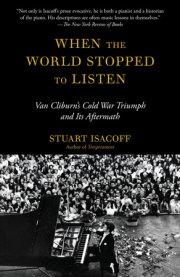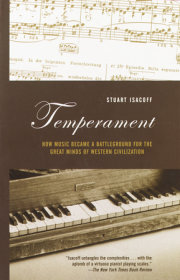Chapter 1A Gathering of Traditions
Even as his body began to fail, for Oscar Peterson (1925-2007) the piano remained a lifeline. The instrument had long been a trusted companion-sparking early dreams, conferring a place in the history books, and easing his way in a world of racial strife. Now, at eighty- one, he looked worn out. Arriving at the stage of New York's Birdland in a wheelchair, after debilitating strokes had weakened his legs and slowed his left hand, he struggled to move his heavy frame onto the piano bench.
Yet, as soon as the keyboard was within reach, even before his torso had completed its fall into a seated position, he thrust out his right arm and grabbed a handful of notes; at that signal, the bass player, drummer, and guitarist launched into their first number. And suddenly there was that sound. He still had it-a musical personality as large as life, steeped in tradition yet recognizably, unmistakably all its own.
For decades, Peterson's technical command and musical instincts had instilled in others the kind of awe and fear he expressed about his idol, the late Art Tatum. He once compared that older piano master to a lion: an animal that scares you to death, though you can't resist getting close enough to hear it roar. (Classical firebrands Sergei Rachmaninoff and Vladimir Horowitz went to hear Tatum perform and came away with the same sense of intimidation.) And that made his comeback all the more difficult.
The Peterson style was always characterized by rapid, graceful, blues- tinged melody lines unfurled in long, weaving phrases with the inexorable logic of an epic narrative; and, equally important, a visceral sense of rhythm, transmitted with fire and snap. Those qualities for which he was renowned-effortless fluidity and clockwork precision-were not merely aspects of his playing; they were the very foundation on which his artistic expression rested. And pulling them off required the highest level of athletic prowess.
At times that evening in 2006, in one of the few scheduled performances on what would turn out to be his farewell tour to the world, flashes of the old brilliance emerged, unscathed by illness and time. Yet the strain was also clear. No matter: playing was for him as necessary as eating and breathing. "That's my therapy," he said after the set, nodding in the direction of the piano as a small smile inched across his half-frozen visage. But in the memorable moments during his set, the large, glistening, ebony Bösendorfer that filled most of Birdland's stage meant something even greater than his personal salvation; for everyone in that room, it became the center of the universe.
It's a role the piano has enjoyed for over three hundred years: luring music lovers to Parisian salons to hear Chopin's plaintive improvisations, and to Viennese concert halls for Beethoven's ferocious, string-snapping outbursts. The piano captured the spotlight at Harlem "rent parties," where two-fisted ivory "ticklers" worked furiously to outshine each other, and consoled lonely miners in the California Gold Rush as roving European virtuoso Henri Herz performed his variations on "Oh Susannah" [sic] for them. It comforted thousands of Siberian peasants who never had heard a note of classical piano music until Russian master Sviatoslav Richter brought it to their doorsteps. It is still capable of wowing crowds in concert halls, clubs, and stadiums the world over.
But the piano is more than just an instrument; in the words of Oliver Wendell Holmes, it is a "wondrous box," filled as much with hopes, yearnings, and disappointments as with strings and hammers and felt. It has been a symbol as mutable as the human condition, representing refined elegance in a Victorian home and casual squalor in a New Orleans brothel.
Consider the gamut of emotions, from elation to dread and even to terror, a performer may face in conquering its technical hurdles, as the young woman in Nobel Prize-winner Elfriede Jelinek's novel The Piano Teacher learned: "She gathers all her energy, spreads her wings, and then plunges forward, toward the keys, which zoom up to her like the earth toward a crashing plane. If she can't reach a note at first swoop, she simply leaves it out. Skipping notes, a subtle vendetta against her musically untrained torturers, gives her a tiny thrill of satisfaction."
THE CRUELTY OF THE PIANO-by Piotr Anderszewski
When I play with orchestra, I sometimes tell myself I'll never play a concerto again. Too many artistic compromises. I only want to do recitals.
When I'm confronted with the extreme loneliness of the recital, the heroism and also the cruelty involved, I sometimes think that I'll never do recitals ever again. From now on I'll only make recordings.
When I'm recording and am free to repeat the work as often as I wish, the possibility of doing better, of giving the best possible performance and where everything can turn against me, the piano, the microphone, and above all my own sense of freedom, I think to myself, I'll never go into a recording studio ever again. It's even more cruel. In fact, the ultimate temptation would be to stop everything, lie down, listen to the beat of my heart and quietly wait for it to stop_._._.
[Yet] sometimes I may not want to play at all, but upon striking the final chord, I say to myself, Something happened here. Something that is completely beyond my control. It's as if the audience had co- created something with me. That's life. Giving is receiving.
FROM THE BRUNO MONSAINGEON FILM Piotr Anderszewski: Unquiet Traveller
Nevertheless, the piano can also exert an almost mystical attraction, seducing devotees into lifelong bonds. The magic, when it happens, is inexplicable. Even the technicians who maintain the piano's working parts can seem at times like initiates in a mysterious cult. "A tuner makes a good husband," claims a character in Daniel Mason's novel The Piano Tuner. "He knows how to listen, and his touch is more delicate_._._._Only the tuner knows the inside of the piano."
Those innards are a miracle of invention. With wood and cast iron, hammers and pivots, weighing altogether nearly a thousand pounds-and capable of sustaining twenty-two tons of tension on its strings (the equivalent of about twenty medium-sized cars)-this majestic contraption will whisper, sing, stutter, or shout at the will of the player. Its tones range from the lowest notes of the orchestra to the highest. It has the remarkable ability to express music of any time period, and in any style-Baroque fugues, Romantic reveries, Impressionist sketches, church hymns, Latin montunos, jazz rhythms, and rock riffs. In the process, it makes everything its own.
THE WONDER OF THE PIANO by Menahem Pressler
I was recently asked by Indiana University, where I teach, to select a new piano, and I found one that I felt was exceedingly beautiful. I've chosen many pianos over the years, and most of the time there were some colleagues who complained about my selection, saying, "It's not brilliant enough," or "It's not for chamber music," or "It's not for solo performance." It's like when you choose your mate and someone else says, "I would never have married her." But this time it seemed that I had selected the Marilyn Monroe of pianos-everyone loved it.
The other night I was playing the Schubert B-flat Sonata on it, and the piano was like a living soul. This was at the end of the day, and I was very tired. And yet I was reminded of what a happy man I am playing on such a piano. You become elated, invigorated, and inspired_._._._all through something built by a factory. It tells me that there is more to life than we can see.
At birdland, Oscar Peterson again proved the instrument's enduring power. By the end of the evening he had the crowd on its feet, cheering and whistling. It was a special moment, and the audience knew it, the culmination of a unique career, and a last chance to experience the Peterson style, crafted by melding many of the disparate strands that ran through the piano's history. His artistry encompassed them all.
For dazzling technique, he followed the lessons of the European classical tradition, culled from childhood sessions in his native Canada, first with his sister, Daisy, then with local pianist Louis Hooper and the Hungarian teacher Paul de Marky. He was so serious about his lessons as a young boy that he would practice for up to eighteen hours at a time, he said, on days "when my mother didn't drag me off the stool." De Marky was a good model: he had studied in Budapest with Stefan Thomán, who had studied with the great Franz Liszt-a musical titan of his day and the founder of modern piano technique.
Liszt's phenomenal facility-in trademark rapid-fire passages and streams of double notes, along with other exciting displays, such as the quick alternation of hands on the keyboard (which, he explained, he had taken from the music of J. S. Bach)-created such a sensation that poet Heinrich Heine described him in 1844 as "the Attila, the scourge of God." Indeed, claimed Heine, audiences should take pity on the pianos, "which trembled at the news of his coming and now writhe, bleed and wail under his hands, so that the Society for the Protection of Animals should investigate them." Liszt's musical tricks had made many of the breathtaking piano feats of Art Tatum possible. (Peterson was so flabbergasted when he first heard Tatum on record that he almost retired on the spot. "I still feel that way," he admitted that evening at Birdland.)
De Marky trained Peterson in that great tradition, and assigned the pianist other staples of the repertoire, such as Chopin's treacherously difficult Etudes, along with the "big, rich soft chords" (harmonies, or simultaneously sounding tones) of Claude Debussy. "Oscar is our Liszt and Bill Evans is our Chopin," commented composer Lalo Schifrin, referring to the popular conception that Liszt conquered the piano while Chopin seduced it.
It's only partly true: the dreamy, impressionist character of a Bill Evans performance does suggest comparisons with the hushed, poetic approach of Chopin, who, according to witnesses, played the instrument using a dynamic range that fell somewhere between a whisper and a murmur. Yet the intricate melodies spun out in an Oscar Peterson solo also owe a great deal to the lyrical genius of Chopin, a composer whose "irregular, black, ascending and descending staircases of notes," wrote critic James Huneker, could "strike the neophyte with terror." And as he taught Peterson, Paul de Marky homed in on Chopin's most important trait. "I don't hear the melody singing," he would tell his student. "The melody is choppy. Make it sing." And so the works of the celebrated classical composers-great improvisers, all-served as his training ground.
Peterson's immersion in classical studies made him an easy target for some of the jazz crowd. Writer Leonard Feather, using the pseudonym Prof. S. Rosentwig McSiegel, authored a lampoon about a technically astounding pianist named Peter Oscarson who dumbfounded other musicians at a concert by playing a "somewhat esoteric interlude, a set of quadrilles and French-Canadian folk songs." But those studies with de Marky put him in good stead for the artistic heights that would come.
Paul de Marky's classical expertise notwithstanding, he also encouraged Oscar Peterson's immersion in the jazz canon. "Mr. de Marky was a very great pianist and teacher," remembered Peterson. "What I loved about him was that he was not shortsighted. He was a fantastic classical pianist. But I would come to him for a lesson, and he'd be playing jazz records"-greats like Teddy Wilson, Nat "King" Cole, and Duke Ellington. "Their playing served as my rudiments," he reported.
He was swept into almost instant fame when producer Norman Granz, visiting Canada, heard him in a live radio broadcast in 1949, and soon after coaxed him into playing in a Jazz at the Philharmonic concert at Carnegie Hall in New York. Introduced as a surprise guest performer, no sooner did he take the stage than, as Mike Levin reported in the magazine DownBeat, the event was stopped "dead cold in its tracks." According to Levin, "he scared some of the local modern minions by playing bop ideas in his left hand_._._._Whereas some of the bop stars conceive good ideas but sweat to make them, Peterson rips them off with an excess of power." Reminiscing about that time, Peterson revealed that he had decided the only way to get attention was "to frighten the hell out of everybody pianistically." He did, and the Peterson-Granz partnership was cemented. The two ended up touring across the continent together, building larger and larger audiences, while battling the pervasive racial prejudice they encountered along the way.
That American debut helped Peterson move beyond an early reputation as an expert in the rhythmically charged, perpetual- left-hand-motion technique of boogie-woogie. After winning a Canadian amateur contest in the style when he was just fourteen, he became known for a while as "the Brown Bomber of Boogie-Woogie," a takeoff on the nickname given to boxer Joe Louis. ("That was RCA Victor's idea, not mine," Peterson recalled with a glint of anger. "They insisted that I do that. As for whatever name they gave me, I'm happy not to remember.")
JAZZ VS. THE CLASSICS
Oscar Peterson was not, of course, the only jazz great with a classical foundation. Even Louis Armstrong, whose sound seemed hatched from the streets and sporting houses of New Orleans without a hint of European influence, spoke of studying the classics as a child in the city's Colored Waif's Home for Boys. "I played all classical music when I was in the orphanage," he recalled. "That instills the soul in you. You know? Liszt, Bach, Rachmaninoff, Gustav Mahler, and Haydn." Pianist Lil Hardin, who eventually married Armstrong, had been a classical-music major at Nashville's Fisk University before she joined the Creole Jazz Band. She found the transition a bit of a challenge, however. "When I sat down to play," she said, "I asked for the music and were they surprised! They politely told me they didn't have any music and furthermore never used any: I then asked what key would the first number be in. I must have been speaking another language because the leader said, 'When you hear two knocks, just start playing.' " She did, they hired her, and her life as a jazz musician was launched.
Leonard Feather was just having a little fun with his "Peter Oscarson" portrait. Yet, even today, it's easy to find "experts" guilty of such silly pigeonholing. Ironically, just at the time the "original instrument" movement in classical music was reaching the conclusion that the quest for absolute stylistic authenticity in the performance of early works was futile, the leadership of Jazz at Lincoln Center in New York was attempting to frame the parameters of "authentic" jazz, as if a sort of purity test were possible. But Whitney Balliett got it right when he wrote that jazz was "the sound of surprise." It thrives on unlimited possibility, not hidebound categories.
Copyright © 2012 by Stuart Isacoff. All rights reserved. No part of this excerpt may be reproduced or reprinted without permission in writing from the publisher.











